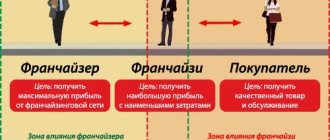Algorithm for starting a business
Passenger transportation is called the most profitable and liquid type of business. It is not necessary to acquire a large fleet of vehicles - to begin with, it is enough to put 5-10 cars on a route, hire a team of employees and establish contacts with competitors. If a new minibus enters an existing route, this could cause problems, especially if there is no real need for new cars on that route. In order not to conflict with competing carriers, it is better to take your cars to a new route, having first studied the city map and traffic patterns.
In the first months, the business may not generate significant income, but over time, if the route is in demand among the population, you can count on profit. Let's look at what needs to be done point by point:
- Analyze the city map, study existing routes or create your own.
- Select the registration form - LLC (as a rule, an individual entrepreneur will not be able to find the required amount alone, but an LLC gives a chance to receive additional financing), taxation system - UTII, if it does not apply in the territorial district, then the simplified tax system.
- Obtain all necessary permits.
- Buy cars for a fleet and rent garage space.
- Consider a maintenance and car wash system.
- Hire drivers.
Personnel selection
For normal operation, in addition to drivers, you will also need mechanics (5 people), dispatchers (2 people) and an accountant. This number of workers is enough for a fleet of 5 machines. The number of drivers who will work in shifts is 10. You will also need an accountant.
Finding qualified drivers with the necessary work experience is quite difficult. Each driver must have a category D license and a minimum work experience of 3 years. Due to the lack of qualified personnel, minibus owners often do not comply with the rules and hire unqualified workers.
Some of them worked as public transport drivers, but were fired for certain offenses, and some do not have sufficient driving experience.
To avoid causing problems with regulatory authorities and spoiling your reputation as a carrier, do not take risks by hiring unqualified workers. It is better to spend more time searching than solving the consequences of problems that have arisen.
How to put a minibus on a route?
In Russia, the legal concept of “minibus taxi” does not exist. By law, such transportation is designated as transportation by public transport. Transportation of passengers and luggage is carried out along a regular route and according to the approved schedule of regular vehicles.
There are different types of transportation:
- Transportation within a populated area.
- Transportation between populated areas.
- Intercity transportation (more than 50 km between settlements).
- International transportation - crossing the borders of the Russian Federation and neighboring countries.
It is very difficult to enter a route in a large city, since the zones of influence are already divided, and it will be very difficult for a young company to compete. There is a chance to open a route in a small locality where the fleet needs to be replaced.
Private transport operates only from revenues from passenger purchases of tickets.
The chosen route is approved by the Ministry of Transport of the Russian Federation.
To approve a new route, it is necessary to justify the need for this event, describe the economic feasibility of the project, think through the organizational section and perform technical calculations. Only after this can local authorities consider your application.
The nuances of business in transporting passengers by minibuses
Before you start purchasing cars and registering a business, you need to consider several important points.
According to the law, in Russia there is no such type of transport as a minibus. What is usually meant by this word is actually classified as a minibus. Since 2013, such minibuses are considered public transport and must transport passengers on regular routes with a specific schedule. They can be of two types:
- those that stop only at certain stops;
- those who stop in any places that are not prohibited for this purpose.
It is also customary to divide minibuses according to the range of passenger transportation:
- minibuses that move along a regular route within the city;
- minibuses that provide transportation to suburban areas (up to 50 km from the city);
- minibuses that run between cities (more than 50 km from the city);
- minibuses that carry out transportation along an international route crossing the territory of another country
The minibus differs from other types of public transport in that it is a private mode of transport, which is financed exclusively from its own profits. To generate more income with minimal costs, business owners often skimp on maintenance and other necessary business expenses. This may affect the safety of passengers and drivers.
Registration of such a business involves obtaining a license, permits from authorized bodies and compliance with a number of requirements for safety and hiring of workers.
The competition here is very high. Most of the profitable routes are already taken, and it is almost impossible to put your minibus on them. To join this niche, in addition to paying all the costs of opening and purchasing cars, you may need to pay a considerable amount to be allowed to get on the route.
Required documents
In addition to registering a legal entity or individual entrepreneur, to legally conduct business you will need a license to transport passengers by bus - the main document for private cab drivers in the Russian Federation.
The license to transport passengers is valid for an unlimited time. This is important to ensure the prevention of damage to the rights, interests, lives and health of citizens. To obtain a license, an individual entrepreneur must:
- Pass certification for the right to engage in relevant activities.
- Have a license to conduct medical examinations of minibus drivers and other personnel.
- Provide a copy of the agreement with the medical organization where medical examinations will be carried out (post-trip and periodic).
- Provide copies of vehicle registration certificates.
- Own the buses on which transportation is planned, undergo regular technical inspections and have documentary evidence of this.
- Fill out the application form indicating your intention to obtain a license.
- Provide copies of documents certifying drivers’ qualifications, work experience and the need to undergo a medical examination.
- Provide a copy of the certificate of ownership of the garage premises and documents confirming the tax registration of the individual entrepreneur.
The license is issued within 1-1.5 months from the date of application. The state duty will be 7,500 rubles.
If the applicant does not meet the established requirements or has not collected a complete package of documents, he will be denied a license.
For working without a license, a fine for individual entrepreneurs is expected in the amount of 100 thousand rubles. For repeated violations, the vehicle will be confiscated.
Recruitment
Minibus taxi drivers have special requirements. And this is not surprising, because the health and lives of many people depend on them. In order to work as a minibus driver, you must have a category “D” driver’s license and have at least three years of driving experience.
While on the line, the driver must strictly obey the dispatcher, adhere to the schedule, know the permitted stopping places and follow his route. In addition, it is very important that they are patient and know how to communicate calmly with people. Unfortunately, very often there are not entirely adequate people who, without any reason, can make claims or argue with the driver.
In addition to drivers, the company needs dispatchers who work in shifts. An accountant can be hired outsourced. A physician is also required to conduct pre-trip examinations of workers. You cannot do without a mechanic to inspect and service the vehicle.
In passenger transportation companies, wages are usually negotiable. Rarely is it fixed, or is it a minimum amount. The rest is a percentage of production. Remember that drivers must work in shifts, so hire two workers for one car.
If you yourself are the owner of a minibus, then under an agreement with the business owner you give him a certain part of the daily earnings (most likely half). All vehicle maintenance costs are your responsibility. Unfortunately, this often leads to the fact that, trying to cut costs, the car owner does not provide the proper level of care for it and saves on repairs and replacement of spare parts.
Costs to start a business
At first, you will have to invest a large amount of money to start the business. It is difficult for one person to accumulate such an amount, so many entrepreneurs are considering partnerships, searching for investors, subsidies or bank loans. The last option is the most difficult, since a loan for a large amount will generate even more loans and there is a risk of ending up in debt that the entrepreneur will not be able to pay off.
The expenses will be as follows:
- purchase of cars for the fleet;
- obtaining insurance;
- service and car wash;
- garage rental;
- staff salaries;
- gasoline costs.
Typically, start-up costs are more than 5 million rubles.
How much does it cost to open a minibus business?
There is no clear answer to the question of how much it costs to open a minibus taxi business. It all depends on the region in which you plan to start, whether or not you plan to purchase a vehicle fleet, and whether other services will be provided. Some investment guidelines can be obtained from advertisements for the sale of a ready-made business. A ready-made business with all the documentation, a minibus and drivers who agree to work for the new owner will cost from 650 to 1350 thousand rubles. The option of purchasing an existing business may be attractive because the entrepreneur will be freed from many initial bureaucratic obstacles and will be able to count on a certain flow of clients. In this case, the buyer will only have to find out exactly why the owner is selling his business. During the main period, the expenses of a business may include parking rental, wages, fuel costs, insurance, maintenance and repairs. Also, current costs may include a subscription fee for the route, payment for medical care, and taxes.
How much does a minibus cost?
Purchasing cars is the most expensive part of the business. First you need to purchase 5-10 cars, the most common brand is Gazelle, the price of which ranges around 500,000 rubles. The main advantage of this machine is its relatively low cost and maintenance. If you save on cars from the very beginning, the payback process will take several years. But gazelles break down quickly, and in 3-4 years the vehicle fleet will have to be renewed.
Foreign models like Mercedes, Ford, etc. also suitable for use. The service life of the machines is longer - up to 7 years, but the cost of purchase and service is correspondingly more expensive. On average, buying cars can cost 4-5 million rubles.
How much do minibus taxis earn?
Finally, we come to the most interesting question. Namely, to the question of how much minibus taxis earn. On average, a route with one minibus in the fleet brings in about 85-90 thousand rubles per month. The range of net profit varies from 60 to 150 thousand rubles per month with a turnover of 100 to 250 thousand rubles. Accordingly, three minibuses can bring profit from 180 to 450 thousand rubles.
The amount of income, in addition to current costs, greatly depends on the specific route, the seasonal behavior of passengers and their weekly routine. Of course, the most profitable business is one that earns money on weekdays, that is, along the “work-to-home” route. Nobody focuses on weekends and transportation of summer residents. On weekends, revenue and net profit indicators may decrease by 2-3 times compared to weekdays.
You can increase profits by placing advertising inside or outside minibuses. Printed products are most often used in the cabin: leaflets, banners, booklets, which are placed in places in full view of passengers, for example, on the backs of seats. A special film with a pattern is applied to the body of the bus. The design is carried out by advertising agency employees.
Staff salaries
The staff must include the following employees:
| Profession | Quantity | Average monthly salary | Total per month, rub |
| Driver | 10 | 40 000 | 400 000 |
| Mechanic | 5 | 40 000 | 200 000 |
| Dispatcher | 2 | 20 000 | 40 000 |
| Accountant | 1 | 40 000 | 40 000 |
| Total | 680 000 |
The staff must include only category D drivers with at least three years of driving experience.
What does salary depend on?
The salary of public transport drivers depends on many factors. Firstly, its size is affected by the length of service and qualifications of the employee. In addition, the salary depends on the type of vehicle the driver drives. But the main differences in the salaries of category D drivers are determined by the region and city in which the person works, as well as the place of his work.
Thus, in a large metropolis, drivers earn up to 100 thousand rubles per month. or more, and in provincial cities their salary does not exceed 28-30 thousand rubles. This big difference can be explained by the fact that traffic on busy highways in large cities is much more difficult, and therefore requires greater physical and psychological effort from bus drivers.
Employees of large transport companies earn more than drivers of small, honest companies that organize passenger transportation. Most often this is due to the reluctance of private entrepreneurs to pay taxes in full. Therefore, they practice the so-called “gray” salary in envelopes, when the official income of drivers is greatly underestimated.
Gasoline costs
The basic fuel consumption for GAZ - 221400 "Gazelle" (for 14 seats) is 17.5 liters per 100 kilometers. Thus, fuel consumption will be calculated based on the taxi route and the number of cars. Let's assume it's 400,000 monthly.
Summarize:
| Expense category | Amount per month |
| Purchasing cars | 4 000 000 |
| Maintenance and insurance | 300 000 |
| Rent of garage premises | 20 000 |
| Employees' salaries | 680 000 |
| Petrol | 200 000 |
| Total | 5 200 000 |
The start-up amount turned out to be very significant. This once again proves why opening a private transport company alone is expensive.
Organizing a business on minibuses: choosing a route
Many entrepreneurs first try their hand at long-haul flights. Hence the benefits - high fares (the more expensive the ticket, the greater the profit), lower costs for spare parts (clutch and brakes will last longer) and fuel (outside the city, any car spends 10-15 percent less gasoline). In addition, not every private owner manages to grab his share on city routes. Why is this happening? There are no secrets here.
The scheme for taking over a business is very simple: one large company appears in the city with a huge fleet of vehicles (about 100 or more units). All these vehicles begin to ply along certain routes, and a novice entrepreneur, even with 5 minibuses, has no choice but to simply leave the transportation market.
On interregional flights everything is much simpler, and the income will be stable (although this is not a fact - it all depends on the season). But in any case, you can make real profits here. As practice shows, all vehicle fleet costs are recouped within the first 6-10 months of transportation.
How much can you earn on a minibus?
Let's figure out how much a minibus earns per day. It’s worth talking about income and estimating net profit and payback periods. Let's say the minibus seats 14 people. There are 10 cars in the fleet, each car makes 10 trips per day. Ticket price is 40 rubles.
Then the revenue from trips will be 10 * 10 * 40 * 14 = 56,000 rubles. This figure will be 1,680,000 rubles per month.
From this amount we subtract the amount of monthly expenses: 680,000 + 200,000 + 300,000 + 200,000 = 1,380,000 rubles. Net profit per month - 300,000 rubles.
The payback period will be
5,380,000 / 300,000 = 18 months, i.e. a year and a half, provided that the buses are filled with passengers 100% of the time, there are no unplanned breakdowns, etc. In reality, the payback period is 2-3 years.
In other countries of the world
Bus drivers in Europe and North America earn more than their Russian colleagues.
Thus, the average monthly salary for this category of workers in Germany is 1.8 - 2.5 thousand euros (130-180 thousand rubles), in France - 1.7 - 2 thousand euros (125-150 thousand rubles). ). In the USA and Canada, drivers earn about 3-3.4 thousand dollars (190 - 215 thousand rubles) per month.
The influence of public transport on the operation of minibuses
Everything here is not as clear as it might seem at first glance. Logically, the metro and trolleybuses with trams should deprive private owners of minibuses of part of their profits, but in practice, running routes near places with high passenger traffic still remains profitable. And if the city authorities also raise the fare, the entrepreneur will probably notice an increased interest in convenient and comfortable minibuses, while public transport will deal mostly with beneficiaries.
With heavy traffic, entrepreneurs have the opportunity to maintain the profitability of their business in passenger road transportation , even without resorting to increasing the cost of their services following the rise in prices of the metro and buses with trolleybuses. But for novice players in this market, it often does not make sense to rush into this zone due to the attendant difficulties. Less popular suburban destinations are often a promising niche, as many cities continue to expand in size, acquire infrastructure, and after active development and settlement, the income level of minibus taxi owners will noticeably increase.











